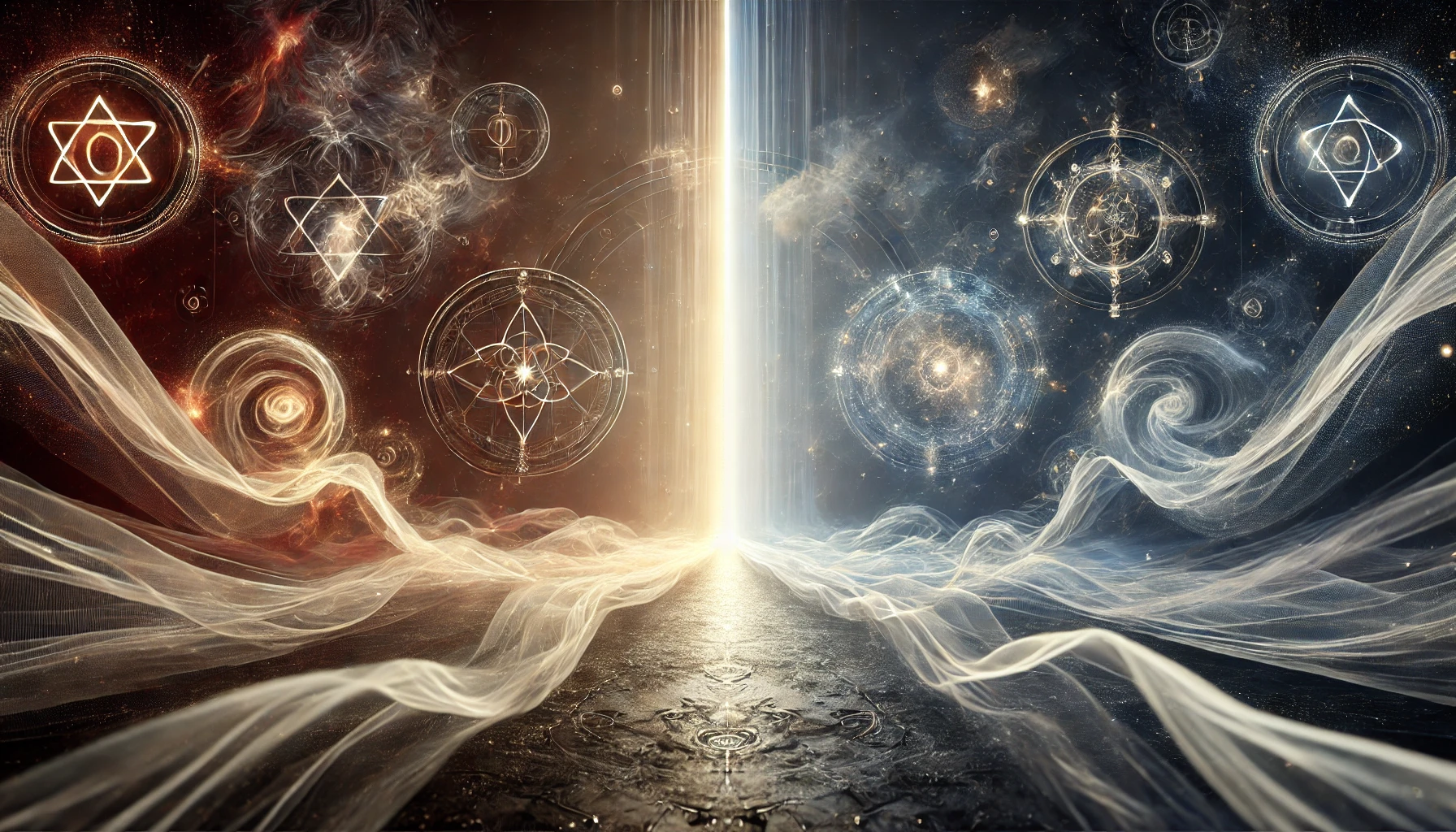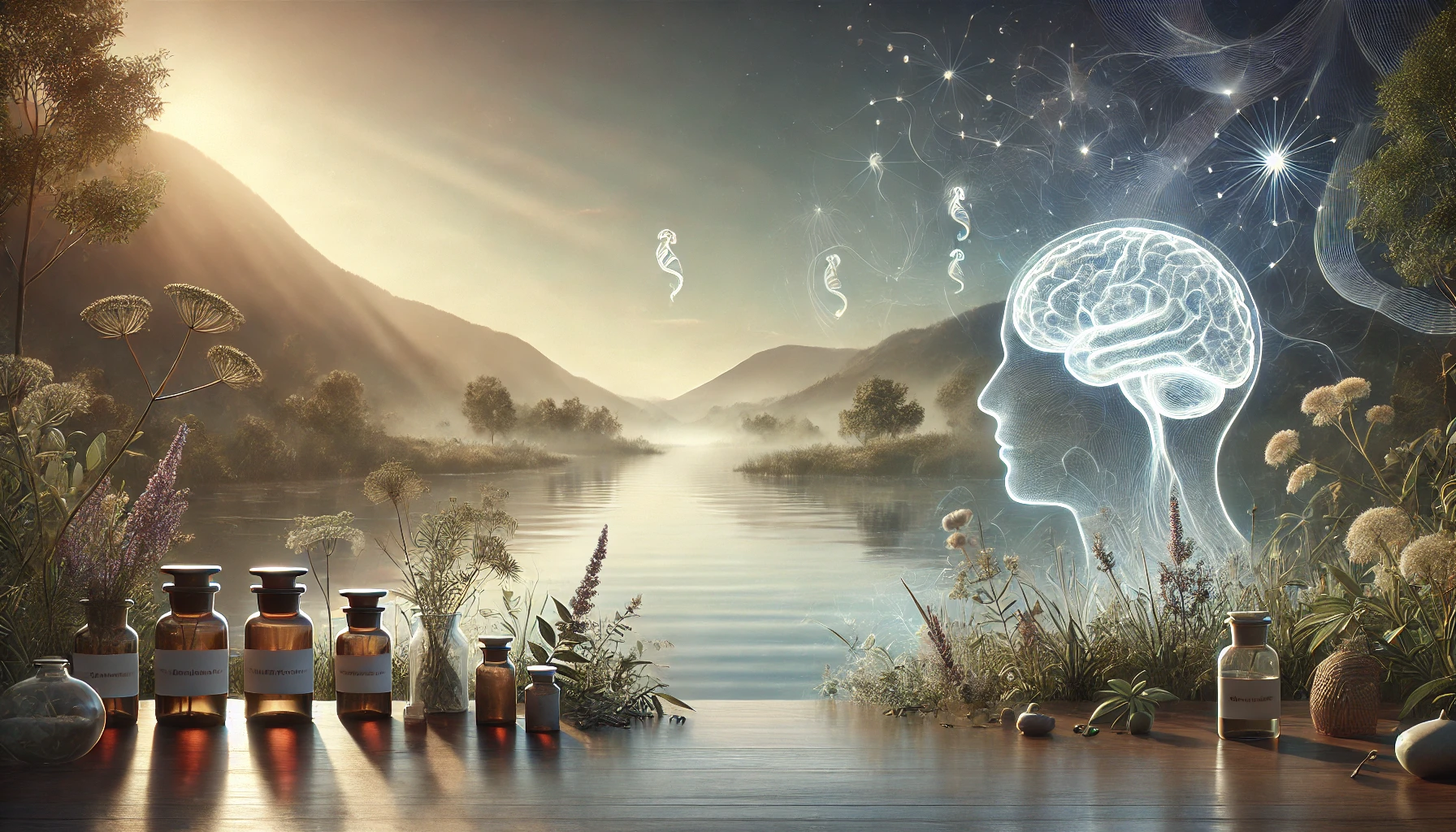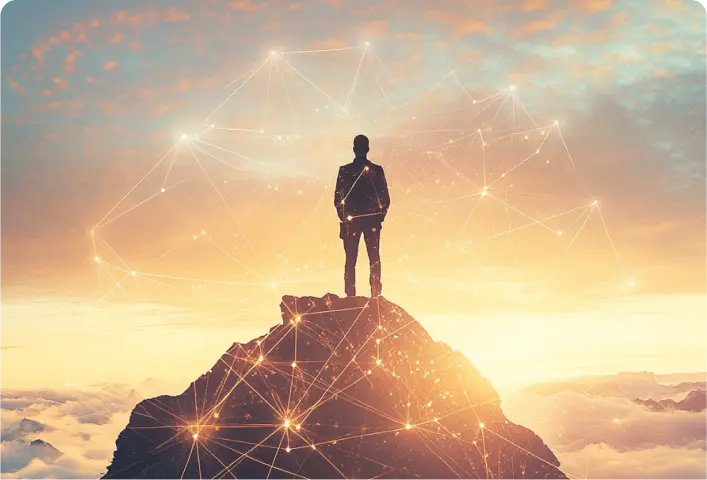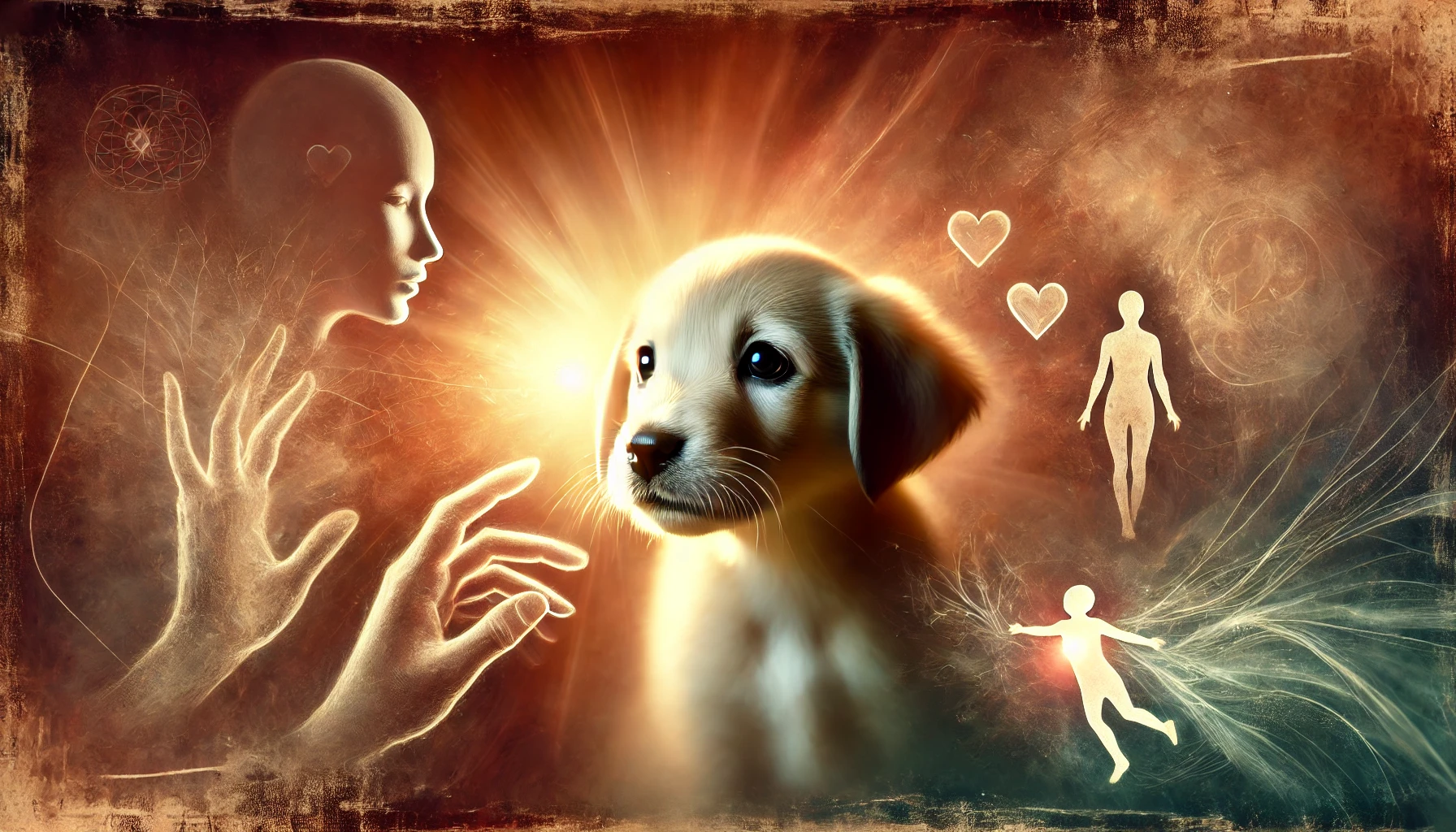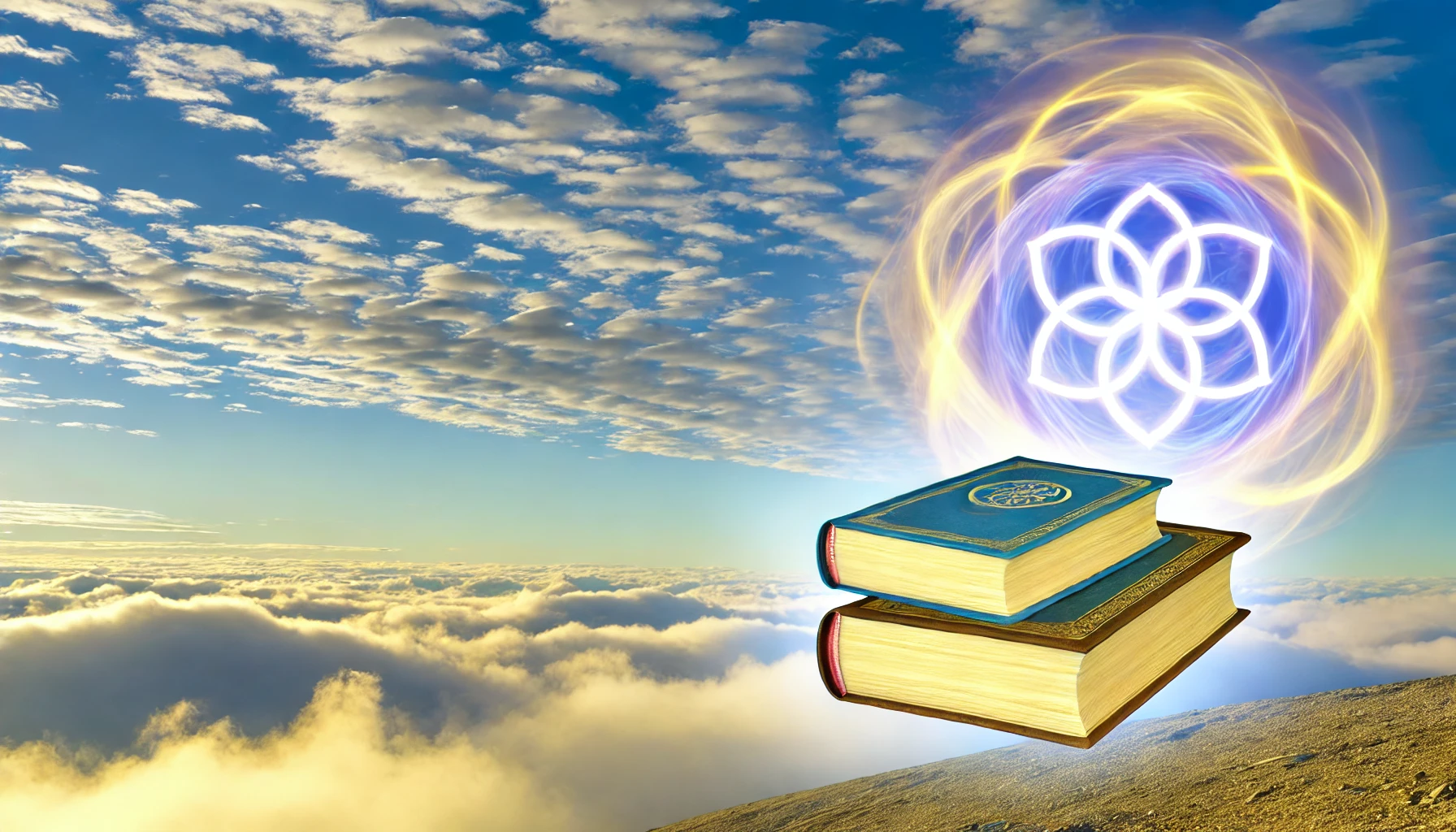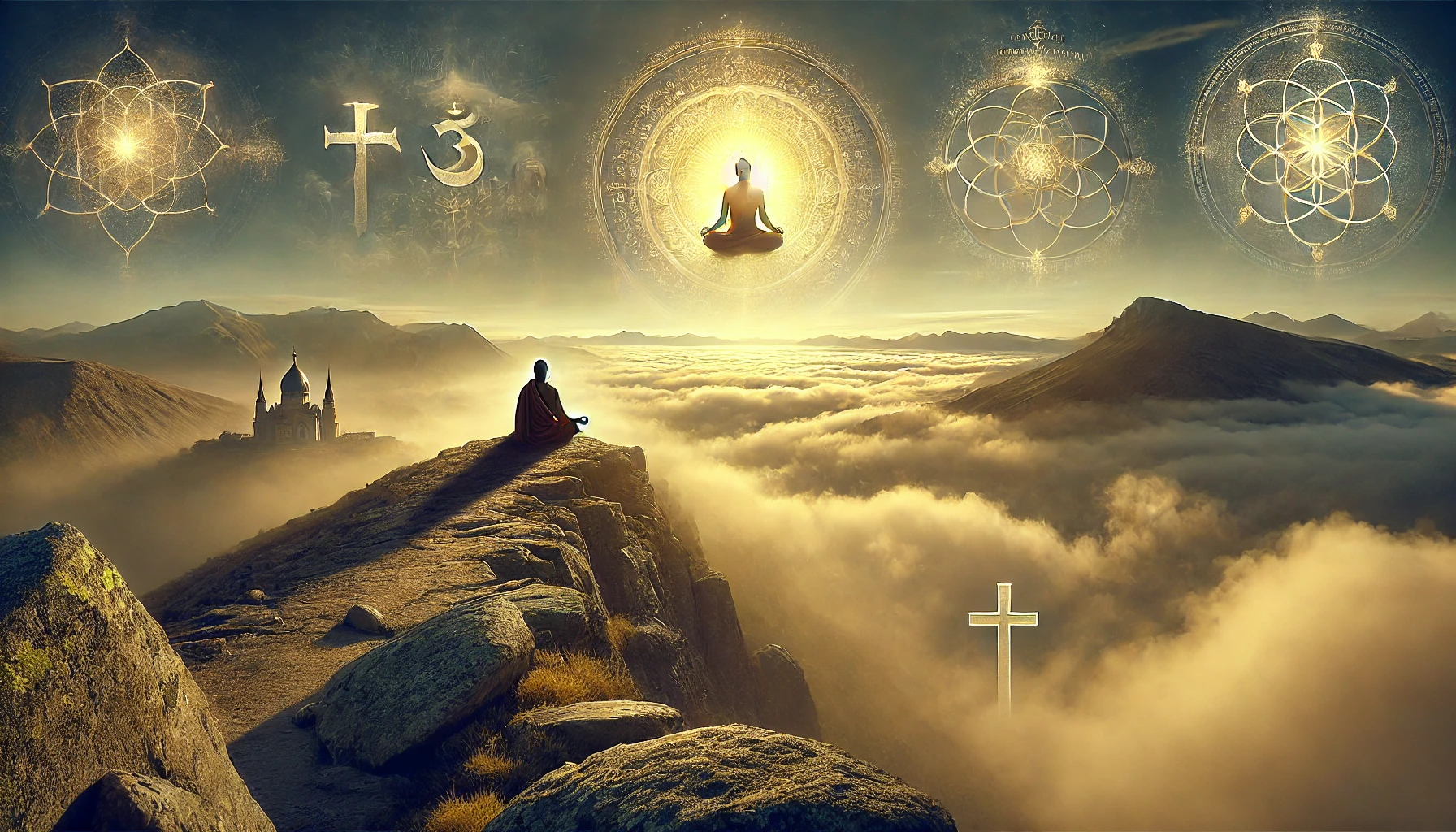
Introduction
Before we get things cooking here, I thought to share my own perspective on the dilemma of allowing our inner demons to choose our leaders. I won’t beat around the bush here.
The US was introduced to the virus of narcissism and an apocryphal level of fear and insecurity by Donald Trump. This inspired many in the nation to focus on the childish and impulsive aspects within them, which awakened their anger and ignorance, inspiring them to join the darkly egoistic MAGA and Qanon movements amid other conspiratorial organizations and forums – rather than go deeper within to source healing for their misconceptions.
As humans, we love certainty, even when certainty is not possible. We will do anything to achieve certainty, often choosing hallucinations and delusions over a peaceful truth.
Given his legal convictions and abuse of women – how can children look up to this man and grow from it? They cannot, except through the related, delusional projections of their parents.
Trump’s greed and ability to lie are attributes rarely found in a president at such magnitude. Regardless of who is president, the damage is done, which has put the US on a path of decay and division, rather than rejuvenation and connection.
Meanwhile, many have not decided which old man to choose – so it’s a toss-up at this time – and there will be drama unlike anything we’ve seen in the months ahead.
RFK Jr has the depth of soul to be an effective president and would keep democracy and compassion alive, even though some may bristle at a few of his beliefs.
Still, the ignorance within the US will grow, further alienating the South, which is where much of the racism, hatred, and egoistic “born-again” religious hypocrisy is based.
If you have questions around this, I am happy to dive into this (and your personal questions) during a private session, which you can purchase on TheShankaraExperience.com.
I hope you enjoy this article!
Let’s Get Into It
As wonderfully imaginative Human Beings, we have somehow lost sense of our light and love. We have lost sense of our connectedness and the ability to live truthfully.
We have grown to love defending our egos and emotions more than we enjoy upholding spiritual tenets related to virtue. Somehow, politics awakens the worst in all of us. Sadly, we’ve lost our way to such a degree that the path back to wholesome living is quickly eroding.
Once upon a time, in the chaotic realm of human laziness, there lurked a uniquely dark and narcissistic soul with phenomenal hair. This nefarious individual possessed a talent for stirring up a bubbling cauldron of anger, greed, racism, and even the most bizarre forms of patriotism within a blindly excitable populace.
We, the hapless lemmings of this world, often find ourselves lost in the labyrinth of our own ignorance, stumbling drunk and stupid through the fog of our insecurities and projections. Our fragile egos are but crackling tinder awaiting the spark of uninformed passion, triggered by the deceptive allure of twisted slogans, to set us ablaze.
In our fantasies, we dance to the suffocating tune of our own self-destruction, heedless of the harmonious melody of compassion, reason, and justice. We forsake the sanctity of law, order, and dharma, embracing instead the screeching of our misguided emotions.
Oh, what a tragic comedy it is, as we happily march toward our undoing, all in the name of distorted patriotism and, eventually, greed. Let’s all pause and reflect upon the folly of our political projections before our collective journey ends in the bitter embrace of self and societal hatred.
The Leaders That Mislead
In the annals of history, humanity has witnessed the rise and fall of countless leaders, each with their unique style of governance. Among these is a dark archetype that has persistently drawn both fascination and dread: the dictatorial leader. This enigmatic figure, marked by authoritarian tendencies and an unwavering thirst for power, has often captivated the collective imagination.
But what lies beneath the surface of this fascination, and what drives individuals to rally behind such leaders? Truly, our hunger for their leadership may, in fact, appease the most primal and base parts of our nature.
In our quest for certainty and control amidst a tumultuous world, we sometimes find solace in the promises of strongman figures who claim to hold the answers to our problems. However, the allure of such leadership often comes at a profound cost—diminishing our compassion, eroding our empathy, and exacerbating our ignorance.
Meanwhile, they do very little to improve our society and, more so, tend to rip it apart.
Let’s unpack the various facets of authoritarian attraction, examine the psychological underpinnings that fuel it, and shine a light on its consequences for our societies. From the suppression of our wisdom and the angels that guide us – to the polarization and division that can plague our media systems, the hunger for dictatorial leadership casts a profound shadow over the purity of our souls.
Yet, there exists a path to reconciliation where we can counteract the allure of authoritarianism. Through critical thinking, empathy, and a commitment to democratic principles, we have the power to mitigate the detrimental effects of this seductive, ego-enflaming force.
The Allure of Authoritarianism
Human history is replete with examples of vast societies drawn to charismatic leaders with authoritarian tendencies. These leaders, often described as strongmen or dictators, possess a magnetic charisma that captivates the masses. But what about authoritarian leaders that can be so seductive, and why do some individuals find themselves irresistibly drawn to them?
The Psychology of Attraction: At the heart of authoritarianism’s allure lies a complex interplay of psychological factors. One key element is the innate human desire for security and certainty in an uncertain world. We LOVE certainty so much that we throw reason and compassion out the window in pursuit of it.
Authoritarian leaders promise stability and control in the face of what is often imagined as chaos. They present themselves as unwavering beacons of strength who can provide clear answers and swift solutions to complex problems. Even our own tinfoil-hatted salesman, Trump, professed a love of bleach and suggested the masses consume it.
This promise can be especially appealing in times of crisis or uncertainty, as it taps into our fundamental need for security. Instead of sinking deep within ourselves to source and heal our fears, we double-down on them like a fat, inbred family of possum-fuckers visiting Vegas from Alabama.
Charismatic Authority: Authoritarian leaders often possess a potent charisma that sets them apart. Their confidence, assertiveness, and ability to convey a sense of purpose can be deeply captivating. People are naturally drawn to those who exude self-assuredness, and authoritarian leaders excel in projecting an image of unyielding determination. This charisma can create a sense of trust and admiration, further fueling the attraction.
The Historical Fascination: We have seen numerous examples of dictatorial leaders who have amassed devoted followings. Figures like Adolf Hitler, Joseph Stalin, and Mao Zedong come to mind, each of them drawing millions into their orbit – commanding the populace to think as they think.
These leaders harnessed the psychology of attraction to forge powerful movements and shape nations. The historical fascination with such figures reminds us of the enduring allure that authoritarianism can hold over societies.
In our quest for certainty, stability, and charismatic leadership, we find ourselves vulnerable to the allure of authoritarianism. The psychological factors that underlie this attraction are deeply ingrained in our human nature, making it imperative to understand the dynamics at play.
In the following sections, we will delve deeper into the consequences of succumbing to this seductive force, exploring how it can suppress our better angels and drastically reduce compassion and the wish for enlightenment.
The Hunger for Certainty and Control
In a world marked by uncertainty, the allure of dictatorial leadership becomes even more pronounced. The promise of a strongman figure who can provide certainty and control can be irresistibly tempting for many. This section explores why individuals hunger for this sense of assurance and how it can lead them down a perilous path.
- Stability in Uncertain Times: One of the primary reasons people are drawn to authoritarian leaders is the desire for stability amidst the world’s chaos. Economic crises, social upheaval, and global uncertainties can leave individuals vulnerable and anxious.
Authoritarian leaders often first create the problem and invite a mass hallucination, then promise to restore order and quell unrest. Soon, they unveil a vision of a future free from turmoil. In their authoritarian grip, people find the illusion of security, even if it comes at the cost of personal freedoms.
- The Appeal of Strong Leadership: Authoritarian leaders often project an image of unwavering strength and decisiveness. They embody leadership, willing to take bold actions and make tough decisions. This appeals to those who yearn for a leader who can cut through bureaucracy and indecision and seems capable of solving complex problems with a firm hand. The strongman figure becomes an attractive option in a world where perceived weakness can be seen as a liability.
- Fear and Insecurity: Fear and insecurity often fuel the hunger for certainty and control. People are more susceptible to authoritarian appeals when they feel threatened or vulnerable. Authoritarian leaders capitalize on these fears, emphasizing external threats and positioning themselves as the only safeguard against impending disaster. This manipulation of fear can lead individuals to willingly surrender their autonomy in exchange for a promise of safety.
- The Erosion of Democratic Norms: In pursuing certainty and control, societies may unwittingly erode democratic norms and institutions. Checks and balances may be circumvented, dissent silenced, and the rule of law undermined. The hunger for a strong leader who can “get things done” can inadvertently weaken the very foundations of democracy.
While the hunger for certainty and control is a natural response to an uncertain world, it is essential to recognize the potential pitfalls of placing too much faith in authoritarian leaders. The promise of stability and strong leadership can come at the steep price of personal freedoms, empathy, and democratic values. In the subsequent sections, we will explore how pursuing such leaders can suppress our better angels and lead to a society marked by ignorance and polarization.
Suppressing Our Better Angels And Inner Master
The seductive appeal of dictatorial leadership often comes at a profound cost to our moral and compassionate values. As individuals rally behind authoritarian figures, they may inadvertently suppress their better angels—those qualities that make us empathetic, compassionate, and morally conscious beings.
- The Suppression of Empathy: Authoritarian leaders prioritize their agenda and power above all else. In pursuing their goals, they may implement policies disregarding marginalized groups’ needs and suffering. This can lead to a suppression of empathy within society – as people become desensitized to the plight of others. The message is clear: loyalty to the leader and the state takes precedence over compassion for fellow citizens.
- Dehumanization and Discrimination: Dictatorial leaders may employ divisive rhetoric that dehumanizes certain groups, portraying them as enemies or threats to the nation. This rhetoric can normalize discrimination and prejudice, further eroding the values of equality and inclusivity. It becomes easier to turn a blind eye to the suffering of those portrayed as different or dangerous.
- The Cult of Personality: Authoritarian leaders often cultivate a cult of personality that revolves around their persona. This personality-centric approach can encourage blind loyalty and the unquestioning acceptance of their actions. Critical thinking and independent moral judgment may take a back seat to the adoration of the leader.
- Suppression of Dissent: In authoritarian regimes, dissent is often silenced or punished. This suppression of opposing voices undermines the principles of free speech and stifles the exchange of ideas and perspectives. A society lacking diverse voices and opinions can become intellectually stagnant and closed off from progress.
- Diminished Commitment to Truth: Dictatorial leaders may use propaganda and misinformation to maintain their grip on power. This can lead to a diminished commitment to truth and facts within society. When truth becomes subjective and manipulated, critical thinking and informed decision-making suffer, contributing to collective ignorance.
The hunger for dictatorial leadership, while rooted in the desire for certainty and control, often results in the suppression of our better angels. Empathy, compassion, inclusivity, and a commitment to truth can be casualties in a society driven by authoritarian tendencies. In the subsequent sections, we will delve deeper into the consequences of this suppression, exploring how it leads to ignorance and polarization, and what steps can be taken to counteract these effects.
The Dangers of Ignorance and Polarization
The seductive appeal of dictatorial leadership, with its suppression of empathy and moral values, has far-reaching consequences for society. As authoritarian tendencies take hold, they can give rise to various dangers, including ignorance and polarization, which threaten the fabric of our communities.
- Erosion of Trust in Facts and Institutions: Authoritarian leaders often undermine trust in established institutions, including the media, academia, and scientific experts. They may label inconvenient truths as “fake news” or dismiss expert opinions that do not align with their narrative. This erosion of trust in facts and institutions can lead to a society where misinformation and conspiracy theories thrive.
- Division and Polarization: Dictatorial leadership frequently thrives on a “us vs. them” mentality, pitting one group against another. This division can lead to political and social polarization, where individuals are pushed to extremes and are less willing to engage in constructive dialogue. A polarized society is less likely to find common ground and address pressing issues effectively.
- Echo Chambers and Confirmation Bias: Authoritarian leaders often foster echo chambers where like-minded individuals reinforce each other’s beliefs and opinions. This isolation from differing perspectives can reinforce confirmation bias, where people only seek out information that aligns with their preexisting views. In such an environment, critical thinking and open-mindedness suffer.
- Erosion of Democratic Values: The unchecked power and authoritarian tendencies of leaders can undermine democratic values and norms. Elections may become less free and fair, with opposition voices silenced or marginalized. This erosion of democratic principles can have lasting effects on the political landscape.
- Stifling of Innovation and Progress: Societies marked by authoritarian tendencies are less likely to encourage innovation and progress. When dissent is suppressed, and conformity is enforced, creative solutions to complex problems may go undiscovered. Intellectual stagnation can impede a society’s ability to adapt and thrive.
The dangers of ignorance and polarization accompanying the seductive appeal of dictatorial leadership are profound. These consequences threaten the very foundations of our democratic societies, eroding trust, stifling progress, and deepening divisions. In the final section, we will explore the path to reconciliation and how we can counteract these detrimental effects, fostering critical thinking, empathy, and a renewed commitment to democratic principles.
The Path to Reconciliation
While the allure of dictatorial leadership and its accompanying dangers are clear, there is hope. Society has the capacity to counteract the seductive appeal of authoritarianism and mitigate its detrimental effects. This section explores the path to reconciliation and offers strategies to foster critical thinking, empathy, and a renewed commitment to democratic principles.
- Promoting Critical Thinking: Education plays a pivotal role in countering authoritarian tendencies. By promoting critical thinking skills in schools and communities, we empower individuals to question, analyze, and evaluate information critically. Encouraging the pursuit of evidence-based knowledge can inoculate society against the allure of misinformation.
- Fostering Empathy and Compassion: Empathy is a fundamental human trait that can be nurtured and cultivated. Community-based programs, dialogues, and initiatives can promote empathy and encourage individuals to understand and connect with others’ experiences. By emphasizing the importance of compassion, we counteract the suppression of empathy that often accompanies authoritarianism.
- Encouraging Civic Engagement: Apathy and disengagement from the democratic process can pave the way for authoritarian leaders. Encouraging civic participation, from voting in elections to actively engaging in local and national issues, strengthens democracy. Informed and engaged citizens are less susceptible to the allure of dictatorial leadership.
- Defending Free Speech and Institutions: A thriving democracy relies on the preservation of free speech and the independence of institutions. Vigilance is necessary to protect these foundations, ensuring they remain resilient in the face of authoritarian challenges. Supporting investigative journalism, academic freedom, and a robust judiciary can safeguard democratic values.
- Fostering Inclusivity and Diversity: Efforts to promote inclusivity and diversity within society help break down the divisions that authoritarian leaders exploit. Embracing many perspectives and backgrounds fosters a sense of unity and shared purpose. Inclusive societies are more resilient against polarization.
A Path Forward
The seductive appeal of dictatorial leadership may continue to rear its head, but it is not an inevitable outcome. Society has the agency to counteract authoritarian tendencies by prioritizing critical thinking, empathy, and democratic values. By fostering a culture that values these principles and actively works to strengthen them, we can navigate the complex terrain of authoritarianism and emerge with a renewed commitment to the betterment of our communities and the world.
A Stark Warning
As we conclude this exploration of the seductive appeal of authoritarianism and its far-reaching consequences, it is impossible to ignore the glaring example of former President Donald Trump. His presidency, marked by a misleading, charismatic authority and a harsh, divisive leadership style, is a stark reminder of the allure and perils of dictatorial and narcissistic leadership.
Donald Trump’s presidency showcased the appeal of a strongman figure who promised to restore stability and certainty, but delivered on very little. He garnered a fervent following in those who needed to exercise their unattended, nonspecific anger, and his charisma and assertiveness resonated deeply with a significant, misguided portion of the population.
Trump’s tenure also laid bare the dangers inherent in authoritarianism.
Throughout his time in office, we witnessed the erosion of trust in institutions and healthy debate, a deepening of political polarization, and the normalization of falsehoods and misinformation. The suppression of dissent and divisive rhetoric further exacerbated societal divisions. These consequences were not unique to the Trump presidency, as history has shown similar patterns in the wake of authoritarian leadership.
The dangers of authoritarianism, as demonstrated by the Trump era, underscore the critical importance of safeguarding democratic principles, promoting critical thinking, and nurturing empathy and compassion within our societies. The seductive appeal of dictatorial leadership may persist, but it is our collective responsibility to resist its allure and to prioritize the values that sustain a healthy and vibrant democracy.
In recognizing the perils of authoritarianism and the cost it exacts on our better angels, we must remain vigilant. By fostering a culture of informed engagement, inclusivity, and a renewed commitment to democratic norms, we can navigate the complex terrain of authoritarianism with clarity and purpose. The future of our democracy depends on our ability to learn from history, confront the allure of authoritarianism, and uphold the principles that define our collective progress.
Recognizing the Allure and Consequences of Dictatorial Leadership
In our journey through the complex terrain of dictatorial leadership, we have unraveled the seductive appeal that it holds and the profound consequences it can inflict on societies. As we conclude, it is essential to recap the main arguments made in this article and underscore the urgent need for individual awareness and reflection.
We have explored how the allure of authoritarian leaders, with their promises of certainty and strong leadership, taps into our primal desires for stability and control in an uncertain world. We delved into the suppression of our better angels, the erosion of empathy and moral values, and the dangers of ignorance and polarization accompanying authoritarian tendencies.
It is imperative that each of us recognizes the seductive appeal of dictatorial leadership and acknowledges its potential consequences. History has shown us the patterns of authoritarian attraction and the risks it poses to the fabric of our societies. Ignoring these dangers can lead to the erosion of democratic values and the stifling of progress.
Now, more than ever, we must engage in deep self-reflection. We must examine our own values, the kind of leadership we support, and the impact our choices have on the greater community. Do we choose leaders who prioritize the common good, empathy, and inclusivity, or do we succumb to the allure of charismatic authority at the cost of our moral compass?
In this moment of reckoning, we are presented with an opportunity to confront the seductive forces that threaten the very foundations of our democracy. By fostering a culture of critical thinking, empathy, and a renewed commitment to democratic principles, we can resist the temptation of authoritarianism and ensure a brighter future for ourselves and generations to come.
Let us not forget the lessons of history, and let us carry forward the torch of enlightenment and compassion, for it is through these values that we can navigate the complex terrain of authoritarianism with wisdom, integrity, and resilience.
Restoring Dignity and Humanity to Our Election Process
In our collective journey to confront the allure and consequences of dictatorial leadership, we must also consider how we can restore dignity and humanity to our election process. Our democratic systems should be more than mere battlegrounds for power; they should be the arenas where we express our shared values and aspirations.
- Compassion for Our Fellow Citizens: Compassion lies at the heart of any thriving democracy. We must recognize the humanity in our fellow citizens, even when we hold differing viewpoints. Compassion encourages us to seek understanding rather than division, to listen to the concerns of others, and to work toward solutions that benefit all members of our society. It is through compassion that we can bridge the divides that have too often marked our elections.
- Dialogue and Informed Debate: Our election process should be a forum for thoughtful dialogue and informed debate. It is through rigorous discussion of ideas, policies, and solutions that we can arrive at the best choices for our communities and our nation. Encouraging respectful and fact-based discourse in our political discourse is essential to restoring dignity to the process.
- Embracing Science and Expertise: In an era of complex challenges, science and expertise should guide our decision-making. We must value evidence-based approaches and prioritize the advice of experts in fields such as public health, economics, and environmental science. Embracing science ensures that our policies are grounded in reality and aimed at the betterment of society.
- Promoting Inclusivity and Participation: To restore humanity to our election process, we must work tirelessly to promote inclusivity and ensure that all voices are heard. Voter suppression and disenfranchisement have no place in a democratic society. By actively encouraging civic participation and eliminating barriers to voting, we can strengthen the democratic foundations of our elections.
In our pursuit of a more dignified and humane election process, let us remember that democracy thrives when we prioritize compassion, open dialogue, scientific rigor, and inclusivity. By actively embracing these principles, we can ensure that our elections truly reflect the values and aspirations of our diverse and vibrant society. In doing so, we take a significant step toward building a democracy that not only resists the allure of authoritarianism but also thrives as a beacon of hope and progress for all.
Ensuring Reasonable and Lawful Evaluation of Candidates
In our ongoing quest to restore dignity and humanity to our election process, one critical aspect must not be overlooked: the necessity of a reasonable and lawful evaluation of candidates. In a democracy, every candidate, regardless of their political affiliation, must be held to the highest standards of accountability, especially when faced with serious legal charges that strike at the core of our values and principles.
- Accountability for Legal Charges: The rule of law is the cornerstone of any just society. Candidates facing serious legal charges, such as those related to rape, fraud, or incitement of violence, must undergo a thorough and impartial legal process. It is essential that these cases are evaluated without bias or partisan considerations, ensuring that justice prevails. This accountability extends to all candidates, regardless of their political affiliation or status.
- Transparency and Fairness: Transparency in the legal process is paramount to maintaining public trust. Citizens have the right to know the details of legal proceedings and the evidence presented against candidates. Fairness in the evaluation of evidence and the application of the law should be upheld, guaranteeing a just outcome.
- Informed Decision-Making: Voters deserve access to accurate information about candidates’ legal situations. Information should be disseminated in an unbiased and responsible manner, allowing voters to make informed decisions based on a candidate’s character and legal standing. Transparency and the free exchange of information are essential to preserving the integrity of our elections.
- Upholding Democratic Values: In evaluating candidates with serious legal charges, we must uphold our democratic values and principles. Democracy requires leaders who respect the rule of law and are committed to the common good rather than personal gain. Holding candidates accountable reinforces these democratic ideals and ensures our leaders act in the nation’s best interests.
As we strive to restore dignity and humanity to our election process, we must not waver in our commitment to a reasonable and lawful evaluation of candidates. Upholding the rule of law, transparency, fairness, and informed decision-making are essential to ensure our democracy thrives. By collectively demanding accountability and adhering to the principles of justice, we reinforce the foundations of our democracy and safeguard the values that make it strong.
You will love The Shankara Oracle as it will take you deeply within and connect you with your pure, divine Self.




